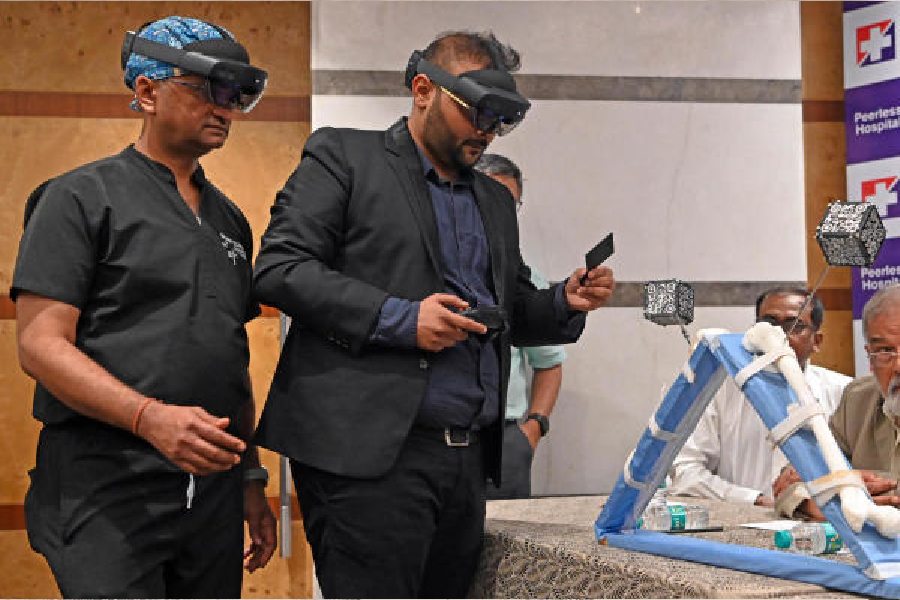An additional pair of eyes could achieve more precision in knee and other joint-replacement surgeries, doctors said on Thursday.
The pair of eyes refers to an AI-powered headset, which, when put on by a surgeon about to perform a knee-replacement surgery, gives a much wider view of the entire limb of the patient.
The headset, developed by Microsoft, is called HoloLens.
“It is billed as an augmented reality system where a CT scan report of a patient’s diseased joint and limb is fed into. A software helps calculate the appropriate alignment of the patient’s affected joint. On the operating table, it gives the surgeon a three-dimensional holographic image of not only the joint but the entire area,” said an official of Peerless Hospital.
A team of doctors from the hospital discussed the new technology at a news conference at a Chowringhee hotel on Thursday.
Sudipta Mukherjee, orthopaedic surgeon and senior consultant at the department of orthopaedics and traumatology, Peerless Hospital, explained its advantages over the existing methods.
“In the conventional method of knee surgery, the doctor replaces a joint with an artificial implant with surgical instruments. The entire process is manual and thus prone to human errors,” he said.
To reduce human error, computer-assisted surgery was introduced. The test reports are fed into the computer.
“The computer calculates and comes out with a perfect alignment. The error margin is reduced but not gone because it is still the humans doing the surgery with instruments,” said Mukherjee.
The next refinement was the robotic method. The computer provides the alignment. Plus, a robotic arm assists the surgeon in the incision and inserting the implant. “However, even in this method, the doctor controls the robotic arm and the scope for human error remains,” he said.
HoloLens is an augmented reality system into which a CT scan of a patient’s diseased joint and limb is fed. A computer programme helps in calculating the appropriate alignment of that patient. The surgeon wears the HoloLens during the operation. It allows the surgeon to validate the cuts and achieve the desired alignment without the robotic arm.
“The surgeon wears the HoloLens. It enables the surgeon to see the entire limb. Earlier, during a knee-replacement, we could only see the front portion of the knee. There was no vision of the hip, ankle or leg. The new system provides a holographic image generated by AI that gives the surgeon a much better and holistic view of the entire limb,” said Mukherjee.
Somnath De, senior orthopaedic surgeon and clinical director at the hospital, explained another advantage of the new technology.
“This technology helps achieve personalised alignment with the freedom to use the implant best suited for that patient. Robotic surgery, however, allows only specific implants that match that particular robotic make,” he said.
The new technology is cheaper than robotic surgery, said an official of the hospital.
“A robotic arm costs around Rs 6 crore. A HoloLens comes at Rs 20 lakh,” he said.
